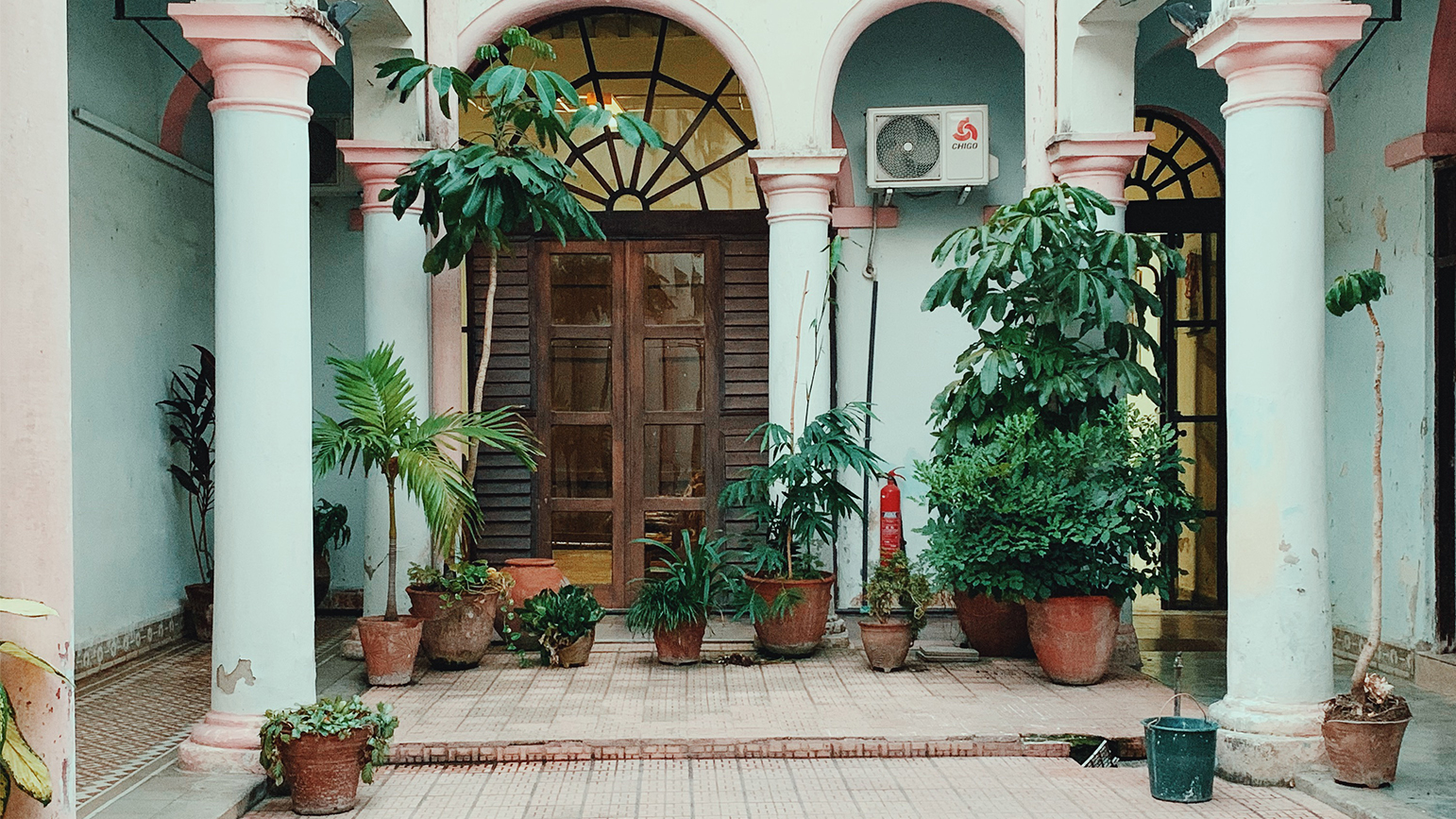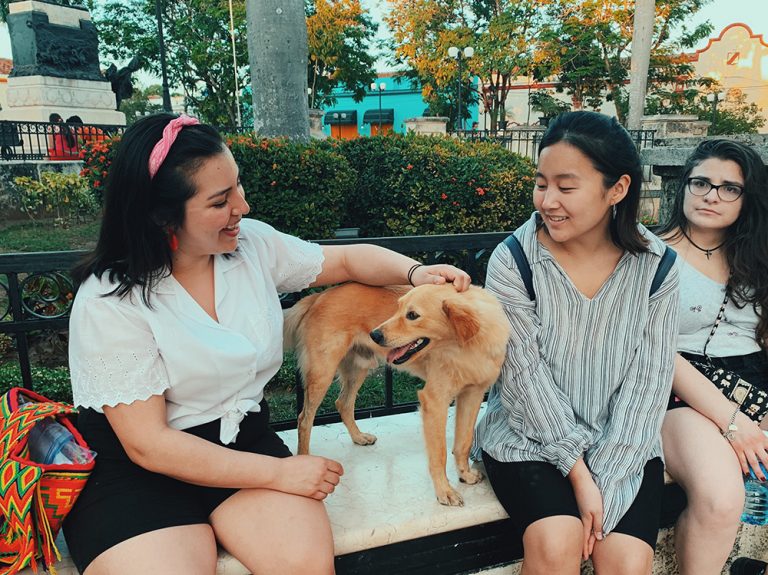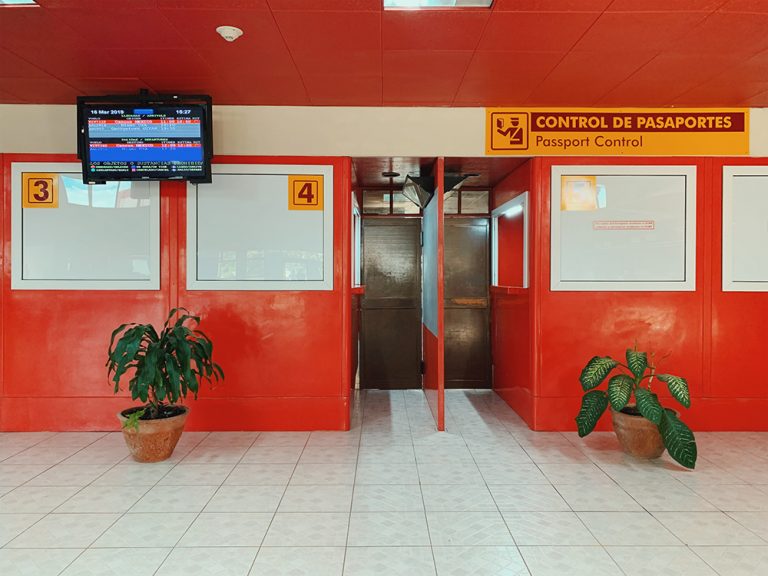
Havana vanities come to dust in Miami.
Or so Joan Didion writes in her 1987 analytical essay “Miami.” But if Cuba exists as reenactment and residue in Miami, how does Miami exist in Cuba? In desire or disdain?
As a Cuban-American, born and raised in Miami, I had only experienced one side of these sister lands. A Cuba that only existed in the memory of others, closely tied to separation from loved ones, the pains of migration, and the helplessness of losing one’s home. I wondered if the stories I heard all my life, if the image I had put together, would look like the real Cuba. I wanted to know, or I had to know, the ways in which Cuba and Miami exist in relation to one another. When the opportunity to take an IDeAte course entitled, Cuba Interactive Video, showed up, I took as a sign to answer my questions about a Cuba I felt I did not know.
 On Thursday, March 7, I travelled to Camagüey, Cuba with a group of six other students, three professors, and one TA. Once we landed at Camagüey-Ignacio Agramonte Aeropuerto, the bright colors, warm breeze, and vegetation felt like a surreal parallel of my home. Maybe this is how Cubans feel when they first meet Miami?
On Thursday, March 7, I travelled to Camagüey, Cuba with a group of six other students, three professors, and one TA. Once we landed at Camagüey-Ignacio Agramonte Aeropuerto, the bright colors, warm breeze, and vegetation felt like a surreal parallel of my home. Maybe this is how Cubans feel when they first meet Miami?
Over my eight days in Camagüey I began to meet Camagüeyanos, at Casa Yvette, a Casa Particular where I was staying, Casa de la Trova, a dance club, at the various parks and plazas, and through other friends. Though it is the third largest city in Cuba, it felt like a small town where you can easily connect to people and run into them on the other side of a plaza. As I began meeting people and making friends, I wondered if they thought about Miami as much as Miami thought about Cuba.
Yuni, a man in his mid-20s, is a tattoo artist who is looking to expand his practice by buying better disposable tools and a larger range of inks. He would like to leave Cuba one day, he told me. I also met Yanelis, a tour guide, wife, and mother of two in her early 30s. She worked in tourism she said, because she hoped that her English and her skills would make her a good fit for a job in the U.S. I met Roberto, a college student, who had moved to Tampa, Florida during his junior year in high school. He loved the endless internet access and food but did not feel supported or comforted by his Cuban-American family members. They were always busy, he said, or not interested in him after his newness wore off. He moved back to Cuba after two years.
 I met Teresa, a lover of performance art and curator of the International Video Art Festival in Camagüey. She has been to Miami and hates it. She prefers Cuba, with all its obstacles, realizing that Cubans are a resilient people that she would rather not live without.
I met Teresa, a lover of performance art and curator of the International Video Art Festival in Camagüey. She has been to Miami and hates it. She prefers Cuba, with all its obstacles, realizing that Cubans are a resilient people that she would rather not live without.
We flew into Miami International Airport on our way out of Camagüey, Cuba, where we walked through many more palm trees, security guards, people gossiping, and many Cuban restaurants. As I picked up my “Cuban” coffee, tasting the familiar roasted beans of Cafe La Llave, a Miami company, I remembered the taste of the coffee available in Cuba, a mix of chicharo and coffee beans. Upon returning home I understood that Cuba does not think about Miami as much as Miami thinks of Cuba. The people I met and spent time with are more concerned with bettering their lives where they are, not just dreaming of a place they have not met. Whereas in Miami, how could you not think of Cuba? It is simultaneously all around you and in you; that is its magic.
–Nathalie Moreno, MFA ’21




